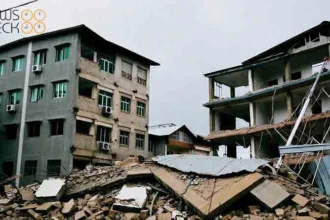We live on a planet. A beautiful, complex machine that has kept us alive for millennia. But lately, we’ve been tinkering with it in ways that are causing problems – global heating, polluted air turning our lungs into riddles, water sources disappearing or becoming toxic, waste piling up like mountains made of yesterday’s dreams.
Thankfully, there’s a growing revolution happening right under our noses (and often inside our buildings). It’s powered by innovation and driven by necessity. People are developing smarter ways to manage the environment – what we call environmental control technology today. And this isn’t just about scientists in white coats; it’s about practical solutions for everyday life, from cleaner air systems in your office to methods that help us reuse more rubbish.
Think of our environment as a giant, interconnected system: the air we breathe, the water we drink, the land where we live and work. Human activities have pushed this complex ecosystem to its limits, creating pollution and depleting resources at an unprecedented rate. But environmental control technology is stepping up to help manage these systems more effectively.
So, what exactly does that mean? It means using clever tools, smart designs, and cutting-edge science not just to stop harm, but actively to improve conditions for air, water, land, and even the energy we use. This encompasses a huge range of solutions – from monitoring pollution levels with sophisticated sensors (like smart ones being used today) to developing entire systems that keep our cities livable despite rising heat.
Let’s break down some key areas where this vital environmental control technology is making waves:
First, Breathe Easy: Mastering Air Quality
Did you know clean air isn’t free? It’s a precious resource we must actively protect and manage. This is precisely what modern HVAC systems (Heating, Ventilation, and Air Conditioning) do – but todays aren’t just for comfort; they’re becoming powerful tools in the fight against pollution.
Older HVAC units might just recirculate whatever air happens to be inside a building. Newer ones use advanced filtration techniques, often employing filters specifically designed to capture fine dust particles (PM2.5), allergens, and even certain pollutants like volatile organic compounds (VOCs). This is crucial indoor air quality monitoring – protecting people from the harmful effects of airborne contaminants found both outside and inside our homes.
Then there’s dealing with the pollution that is outside. That’s where technologies like emission control systems come in. These aren’t just for smokestacks anymore, though industrial compliance is still a major part. We’re seeing incredible innovation: think about vehicles equipped with selective catalytic reduction (SCR) systems that drastically cut nitrogen oxides – a common air pollutant. Or stationary power plants using carbon capture technology, although this needs more development and funding to become truly mainstream.
But it goes beyond just capturing existing pollution. The drive for zero-waste initiatives isn’t only about not making stuff, but also about burning less of the stuff we already have (like fossil fuels). This is where renewable energy integration becomes a core part of environmental control technology. Generating electricity cleaner reduces emissions at source.
Furthermore, managing waste itself can be an air quality issue – think about controlling odors from landfills or wastewater treatment plants using special technologies. That’s another facet of comprehensive environmental management systems focusing on the whole lifecycle.
Next Up: Water Wizards & Earth Protectors
While we focus on breathing easier, water is equally critical for life and environmental control. We need to manage this precious resource with care – purifying it, protecting its sources, and finding alternatives when supply runs short or contamination occurs.
We hear a lot about sophisticated water purification systems, like reverse osmosis plants that turn salty sea water into drinkable fresh water using advanced membrane technology. These are crucial environmental engineering projects, especially in regions facing droughts or needing to meet stringent clean water requirements for public health and ecosystems.
But what happens when the dirty stuff is already there? Enter waste water treatment facilities – marvels of modern chemistry and biology. They use complex processes involving microbes (bio remediation techniques), chemicals, and membranes not just to get rid of waste but crucially, to recover usable resources like clean water and energy (biogas). These plants are essential for preventing nutrient pollution in rivers and lakes and protecting groundwater protection zones.
Then there’s desalination technology, another vital tool. Especially as climate change affects rainfall patterns globally, turning seawater or brackish water into freshwater becomes more critical. While still expensive compared to conservation methods (like reducing overall resource use through circular economy practices), it’s a solution being developed with increasing efficiency, contributing to sustainable manufacturing where access is limited.
The Trash Solution: Turning Waste Around
Landfills aren’t the end; they’re often just the beginning of a problem if we don’t manage waste properly. Solid waste management requires more than just digging holes – it needs innovation and foresight.
This is why recycling technologies have become so vital in recent years, especially those handling complex materials like electronics or plastics using advanced methods such as mechanical recycling or even chemical (or bio) recycling that breaks things down further. Composting systems for organic waste represent another form of green technology – transforming rotting food scraps into nutrient-rich soil amendment.
The concept of zero-waste initiatives often extends beyond just recycling; it involves redesigning products, using less packaging, and promoting reusable items from the start. This holistic approach is a key aspect of future environmental innovations. And then there are fascinating places like waste-to-energy plants, which aren’t for everyone (they might prefer cleaner options). These facilities burn waste under controlled conditions to generate steam or electricity, but they need sophisticated emission controls – think carbon capture again – to manage the air pollution side effect effectively.
Industry and Innovation: Building a Greener Future
Businesses are major players in needing environmental control technology. Factories, power plants, offices, cities – all contribute significantly to resource consumption and emissions through sustainable manufacturing practices or simply by existing.
This is where concepts like industrial compliance, often enforced by environmental regulations, push companies towards installing specific technologies. Think about factories using automation in environmental monitoring via smart sensors not just for efficiency but constantly tracking their own pollution output – something crucial for environmental engineering projects seeking permits and aiming for carbon neutrality.
Newer ideas involve integrating things like energy-efficient systems powered by renewable sources directly into the building design itself, known as green building design. This isn’t just about bricks and mortar; it’s thinking ahead about how a structure interacts with its surroundings from day one.
Why Bother? The Benefits Are Real
The simple truth is that investing in good environmental management systems makes sense for everyone – not just the environment itself, but also our health, finances, and future security. Better indoor air quality protects us from respiratory illnesses, which saves healthcare costs even as it improves productivity (a huge benefit often overlooked).
Reducing pollution helps protect natural resources like clean water ecosystems and healthy soil capable of producing food without toxic runoff – part of ecological systems preservation.
Technologies aiming for carbon neutrality or significant reductions in Green House Gas emissions are critical environmental regulations tools. They help mitigate climate change by directly tackling one of its biggest drivers: excess carbon dioxide accumulating faster than natural systems can manage, impacting our planet’s balance.
Beyond health and the environment, practical applications often save money too. An energy-efficient HVAC system reduces heating/cooling bills – that’s an immediate benefit for businesses and homeowners alike while contributing to cleaner air inside via better filtration during environmental control technology upgrades. Similarly, smart ventilation systems use data not just for comfort but to optimize energy use, reducing costs through efficient resource conservation.
The Horizon: Endless Possibilities
The field is still evolving rapidly – that’s the exciting part. We’re moving from basic compliance towards proactive solutions driven by sustainability goals globally.
Think about Nano-technology being applied in pollution control; it offers incredibly small-scale ways to filter or break down contaminants more effectively than ever before, potentially revolutionizing everything from water purification systems design to personal air purifiers for environmental control technology.
We’re also seeing smarter integration – linking different parts of environmental control together through intelligent management systems. Imagine a building not just having smart energy-efficient lighting and HVAC, but perhaps monitoring internal CO2 levels linked automatically with local outdoor air quality sensors (another form of advanced air quality monitoring) via IoT principles to adjust ventilation accordingly or manage emission controls for nearby sources more responsively.
The future likely holds even more sophisticated environmental control technology, tailored not just to entire cities or factories, but potentially to individual homes – creating truly sustainable living environments that adapt in real-time to conserve resources and maintain comfort without harming the planet. This is part of achieving broader environmental regulations targets at a personal level while contributing significantly to global resource conservation efforts.
Conclusion: A Call for Tamer Tech
The challenges we face are immense, but so is human ingenuity. Environmental control technology isn’t just about reacting; it’s increasingly about predicting and preventing harm before it happens across air quality monitoring, water systems, and land use planning (including green building design principles).
These technologies – whether they’re emission reduction systems on a factory roof or intricate recycling processes powered by renewable energy integration – are tangible steps towards managing our resources wisely and mitigating the worst effects of climate change through carbon capture possibilities. They represent clean technology applied with purpose, not just as an afterthought but as fundamental to how we build, live, work, and exist on this planet.
As NewsNeck often demonstrates in blogs (in a slightly different context), understanding complex issues doesn’t have to make them seem unsolvable or too technical for everyday people. When you grasp the core idea – that environmental control technology is about finding smarter ways to manage our shared environment, protecting health and saving money – it becomes not just possible, but exciting.
The convergence of smart sensors data analysis with traditional environmental engineering principles offers a powerful toolkit for tackling everything from local smog issues (requiring emission controls) to global resource scarcity. It’s time we embrace these innovations fully because taming planet Earth isn’t an option; it’s essential for our future well-being and sustainable development goals.













